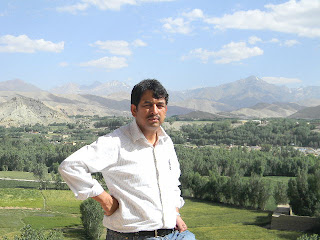Establishment: 13th September 2012
Introduction:
On
the occasion of 42nd birthday on 13th September 2012, I
would like to declare a trust fund- Helping hand Social Service Charity (HSSC)
Nepal. The trust fund will establish
with fixed term deposit of one hundred thousand rupees (100000). The interest
amount Rs 12000 from the deposited fund will be counted as income. The annual
income-Rs 12000 will be provided to conflict/war and cerebral palsy. In medical term,
cerebral palsy is paralysis resulting from abnormal development or
damage to the brain before or soon after birth.
Initially, this fund will be used to support two children each year. To
extend the support to the needy people of Rapti Zone, Mid-west, and the fund
will be raised with charity.
From the last 15 years, I
have been working for development sector. In my professional life, I have affiliated
with various international organizations. I am familiar with system of UN DFID,
SNV among other national and International organizations. Feeling myself confident to contribute in
society with efficiency and collective effort from the existing donor agencies
and programme projects. I realize I
should initiate some social welfare work to contribute for my own society. I
would like to ensure that this is fully my charity work and will not spend any
single penny for political cause. It will also not use in influence of any
individual. The fund will go for real victim and needy people as said above.
This trust fund establishment
is personal initiative. It will not
complete without collaborative effort from other colleagues. So that, I would
like to appeal to my friends, relatives, business people, teacher, students and
professionals who would like to contribute in this welfare work. Your small
contributions will help a lot to do the individual children and society.
Objectives of Charity:
-
To support conflict/war
and cerebral palsy (Paralysis resulting from abnormal development
or damage to the brain before or soon after birth) affected children’s
-
To extend support
to rural areas Community Schools and Health Centres
-
To increase
sponsorship by Nepali’s to Nepalese for
charity (Paropakar) welfare for social welfare activities
Management
Responsibilities:
As per my plan in the
beginning this fund will be managed jointly by me (Nahakul K.C.) and Sewa
Foundation Nepal (Tulsipur Dang based civil society organization). Sewa
Foundation agreed to take all management responsibilities as voluntary basis.
This charity will not spend any single penny for operation and management cost.
Transparency:
I would like to ensure to all
of who would support for this charity fund will be spend in transparent manner and contributions will be posted in website and
public notice board. And individual sponsor will receive of individual
children’s progress and cost of expenses.
Selection Criteria’s for
Children:
Options
A:
-
Children’s must
be Maoist Insurgency (war) affected children or any civil war affected
-
All children will
be form Midwest Nepal
Options
B:
-
Cerebral
palsy (Paralysis resulting from
abnormal development or damage to the brain before or soon after birth)
affected children’s
-
Disable
children’s
Options
C:
-
School building
support where all schools buildings are Thatch houses and not receiving any
kind of government support
-
Community Health
Centres where women and children’s can get health facilities
Ways of Support:
Your small contributions and
donations will support to the children. Your support will be highly
appreciated. You can send your contributions in following bank account details;
A/C Name:
Nahakul K.C.
A/C No:
0110017550 2257.
Swift Code: NARBNPKA. Bank Address: NABIL Bank,
Kantipath, Kathmandu, Nepal
Contact Details:
Sahayogi Hat Paropakar
Karayakraram Nepal (Helping Hand Charity-Nepal)
C% Sewa Foundation Nepal,
Tulsipur Dang Nepal
Phone: 00977 9857820633
Email: nahakulkc@gmail.com
Face book: https://www.facebook.com/sewafoundation




